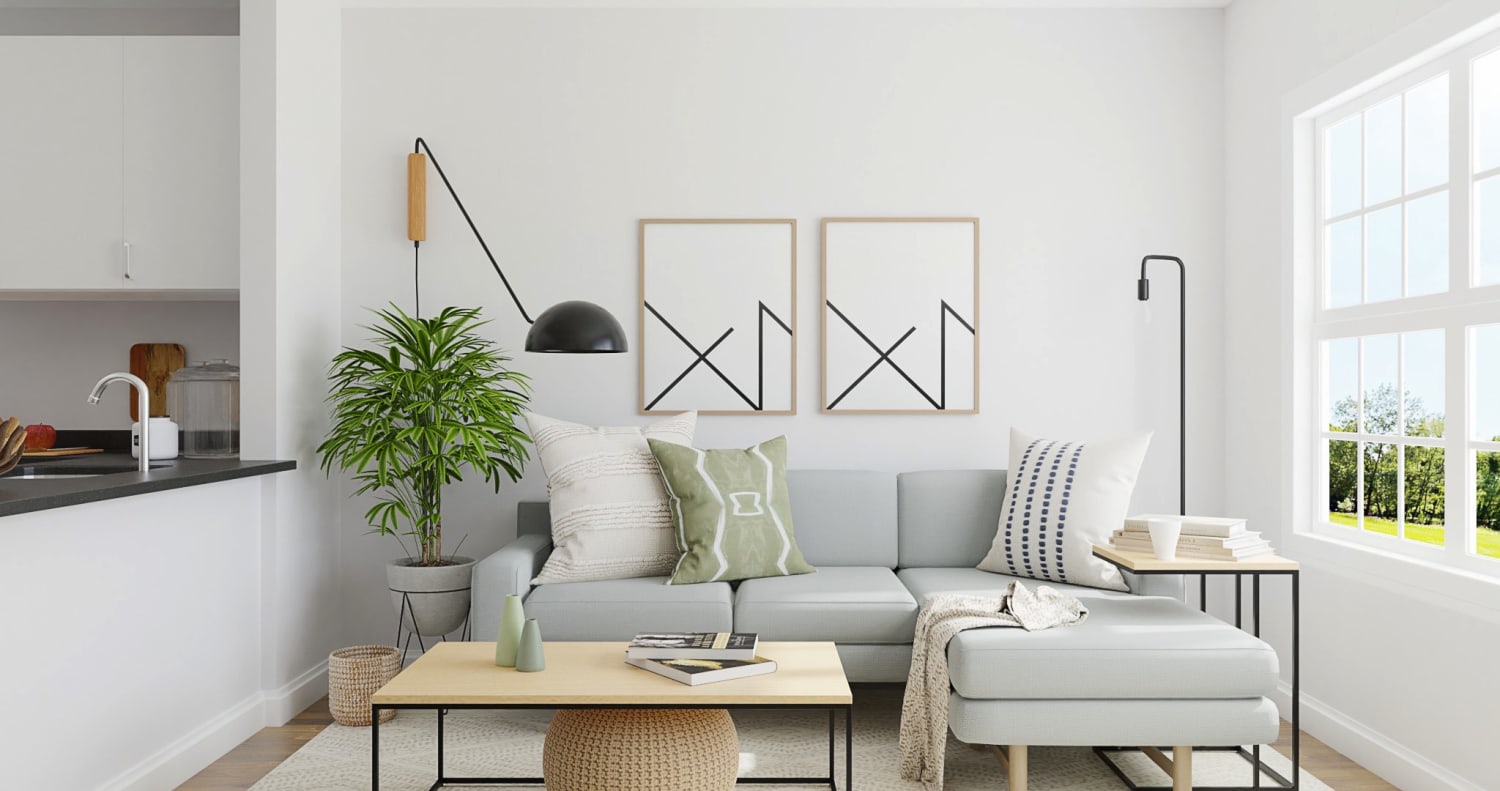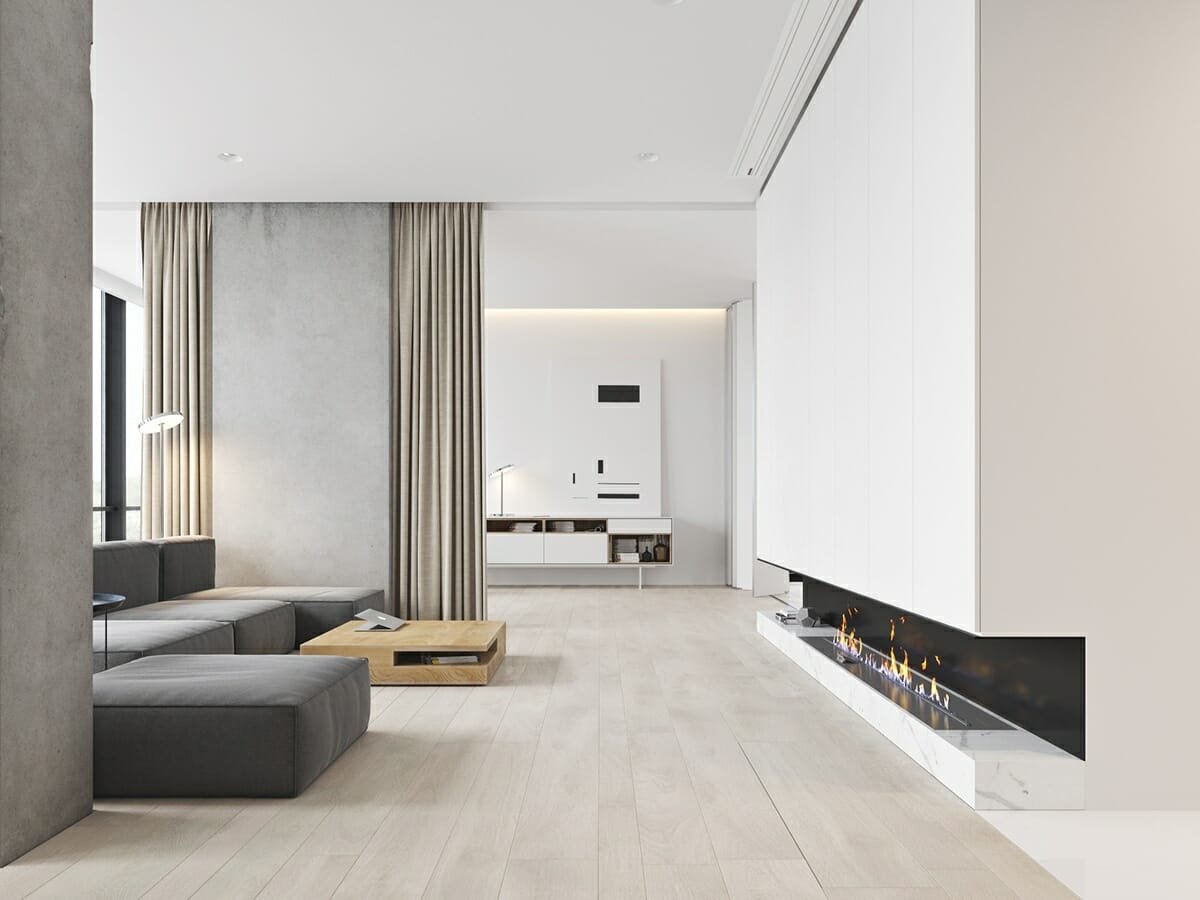Minimalist Home Design: A Guide To Effortless Elegance
Minimalist Home Design: A Guide to Effortless Elegance
Minimalist Home Design: A Guide to Effortless Elegance

Minimalism, a design philosophy that prioritizes simplicity, functionality, and clean lines, has taken the world by storm. It’s not just a trend, but a lifestyle choice that resonates with those seeking a sense of peace, order, and clarity within their living spaces. When applied to home design, minimalism transforms houses into sanctuaries, where every element serves a purpose and contributes to a sense of tranquility.
This article delves into the captivating world of minimalist home design, exploring its core principles, highlighting its advantages, and providing practical tips for incorporating this aesthetic into your own home.
The Essence of Minimalism:
Minimalist design is characterized by its deliberate absence of clutter, its emphasis on natural materials, and its focus on creating a harmonious and uncluttered environment. It’s about stripping away the unnecessary and highlighting the essential, allowing the true beauty of the space to shine through.
Core Principles of Minimalist Home Design:
Table of Content
Less is More: The foundation of minimalism lies in the principle of "less is more." This means carefully curating belongings, eliminating unnecessary items, and focusing on quality over quantity.

Clean Lines and Simplicity: Minimalist design favors clean lines, geometric shapes, and simple forms. Avoid intricate details and ornate patterns, opting instead for smooth surfaces and uncluttered spaces.
- Driving Into The Future: A Comprehensive Review Of Homestyler 3D For Vehicle Reviews
- Navigating The Road Less Traveled: A Guide To 3Dhomestyler Vehicle Reviews
- From Driveways To Living Rooms: The Rise Of Vehicle-Inspired Home Decor
- The Art Of The Review: Designing A Vehicle Review Villa
- Roomstyler 3D: Bringing Your Dream Vehicle To Life
Neutral Color Palette: Minimalist interiors typically feature a neutral color palette, often incorporating shades of white, gray, beige, and black. These colors create a sense of calm and spaciousness, providing a blank canvas for pops of color through artwork, furniture, or decorative accents.
Natural Materials: Minimalism emphasizes the use of natural materials like wood, stone, leather, and linen. These materials bring warmth and texture to the space, while also promoting sustainability and a connection to nature.
Functionality Over Decoration: Every piece of furniture and decor should serve a practical purpose. Avoid unnecessary clutter and focus on items that enhance the functionality and usability of the space.
Open Floor Plan: Minimalist homes often feature open floor plans, which maximize space and create a sense of flow and continuity. This promotes a feeling of openness and airiness, making the space feel larger and more inviting.
Strategic Lighting: Lighting plays a crucial role in minimalist design. Natural light is maximized through large windows and skylights, while artificial light sources are chosen for their functionality and aesthetic appeal.

- Driving Into The Future: A Comprehensive Review Of Homestyler 3D For Vehicle Reviews
- Navigating The Road Less Traveled: A Guide To 3Dhomestyler Vehicle Reviews
- From Driveways To Living Rooms: The Rise Of Vehicle-Inspired Home Decor
- The Art Of The Review: Designing A Vehicle Review Villa
- Roomstyler 3D: Bringing Your Dream Vehicle To Life
Benefits of Minimalist Home Design:
Enhanced Sense of Calm: The absence of clutter and the focus on simplicity create a sense of peace and tranquility, promoting relaxation and reducing stress.
Improved Focus and Productivity: A minimalist environment fosters clarity and focus, making it easier to concentrate on tasks and be more productive.
Increased Space and Light: The emphasis on decluttering and open floor plans maximizes space and allows natural light to flood the interior, creating a sense of spaciousness and openness.
Enhanced Functionality: Every element in a minimalist home serves a purpose, making the space more functional and efficient.
Sustainability: Minimalism promotes sustainability by encouraging the use of natural materials, reducing waste, and fostering a mindful approach to consumption.
Practical Tips for Incorporating Minimalism:
Declutter and Donate: Start by decluttering your home, getting rid of anything you don’t use, need, or love. Donate items in good condition to charity or sell them online.
Choose a Neutral Color Palette: Paint your walls in neutral shades like white, gray, or beige. This will create a calming backdrop and allow you to add pops of color through furniture and accessories.
Invest in Quality Furniture: Choose furniture that is both functional and aesthetically pleasing. Opt for pieces with clean lines, simple designs, and durable materials.
Use Natural Materials: Incorporate natural materials like wood, stone, leather, and linen into your decor. These materials add warmth and texture to the space, while also promoting sustainability.
Minimize Accessories: Avoid excessive accessories and focus on a few key pieces that add personality and visual interest.
Maximize Natural Light: Open your curtains and blinds to let in natural light. Consider adding mirrors to reflect light and make the space feel brighter.
Create a Focal Point: Choose a single focal point in each room, such as a piece of artwork, a fireplace, or a statement piece of furniture. This will draw the eye and create visual interest.
Keep Surfaces Clean and Uncluttered: Regularly tidy up and declutter surfaces to maintain a sense of order and cleanliness.
Embrace Negative Space: Leave some space around your furniture and decor to create a sense of airiness and openness.
Personalize with Meaningful Items: While minimalism emphasizes simplicity, it doesn’t mean your home should be devoid of personality. Incorporate a few meaningful items that reflect your interests and style.
Beyond the Aesthetics:
Minimalism is more than just a design aesthetic; it’s a philosophy that can positively impact various aspects of your life. By embracing minimalism, you can cultivate a sense of peace, clarity, and intentionality in your home and beyond.
Minimalism and Sustainability:
Minimalism aligns perfectly with sustainability. By decluttering and consuming less, you reduce waste and your environmental footprint. Choosing durable, natural materials for furniture and decor further supports sustainable practices.
Minimalism and Mental Wellbeing:
A minimalist home provides a sense of calm and order, which can significantly contribute to mental well-being. The absence of clutter reduces stress and promotes focus, creating a more peaceful and harmonious environment.
Minimalism and Financial Freedom:
Minimalism encourages mindful consumption, leading to reduced spending and increased financial freedom. By decluttering and prioritizing quality over quantity, you can free yourself from the burden of unnecessary possessions and financial obligations.
Conclusion:
Minimalist home design is not about living with nothing; it’s about living with intention and purpose. It’s about creating a space that reflects your values, promotes your well-being, and fosters a sense of peace and tranquility. By embracing the core principles of minimalism and applying the practical tips provided, you can transform your home into a sanctuary of simplicity, elegance, and serenity.
Beyond the Home:
The principles of minimalism can extend beyond your home and into other areas of your life. From your wardrobe to your digital life, minimalism can promote a sense of clarity, focus, and intentionality.
Minimalist Wardrobe:
A minimalist wardrobe focuses on quality over quantity, selecting versatile and timeless pieces that can be mixed and matched to create a variety of outfits. It involves decluttering your wardrobe, getting rid of anything you don’t wear or love, and focusing on essential items that serve your needs and reflect your personal style.
Minimalist Digital Life:
A minimalist digital life involves decluttering your online presence, streamlining your apps and subscriptions, and focusing on what truly matters. It involves unsubscribing from unnecessary emails, deleting unused apps, and minimizing distractions to create a more focused and productive digital environment.
Minimalism in Everyday Life:
Minimalism can be incorporated into various aspects of your life, from your daily routines to your relationships. It’s about making conscious choices, focusing on what truly matters, and prioritizing experiences over possessions.
Embracing Minimalism:
Minimalism is not a one-size-fits-all approach. It’s about finding what works best for you and your lifestyle. It’s about embracing simplicity, prioritizing quality over quantity, and creating a life that is both meaningful and fulfilling.
Final Thoughts:
Minimalism is not just a design trend; it’s a lifestyle philosophy that can transform your home, your digital life, and your overall well-being. By embracing the principles of minimalism, you can create a space that is both aesthetically pleasing and functionally efficient, promoting peace, clarity, and intentionality in your life. It’s about living with less, so you can experience more.
sure
Thus, we hope this article has provided valuable insights into Minimalist Home Design: A Guide to Effortless Elegance. We appreciate your attention to our article. See you in our next article!
Posting Komentar untuk "Minimalist Home Design: A Guide To Effortless Elegance"